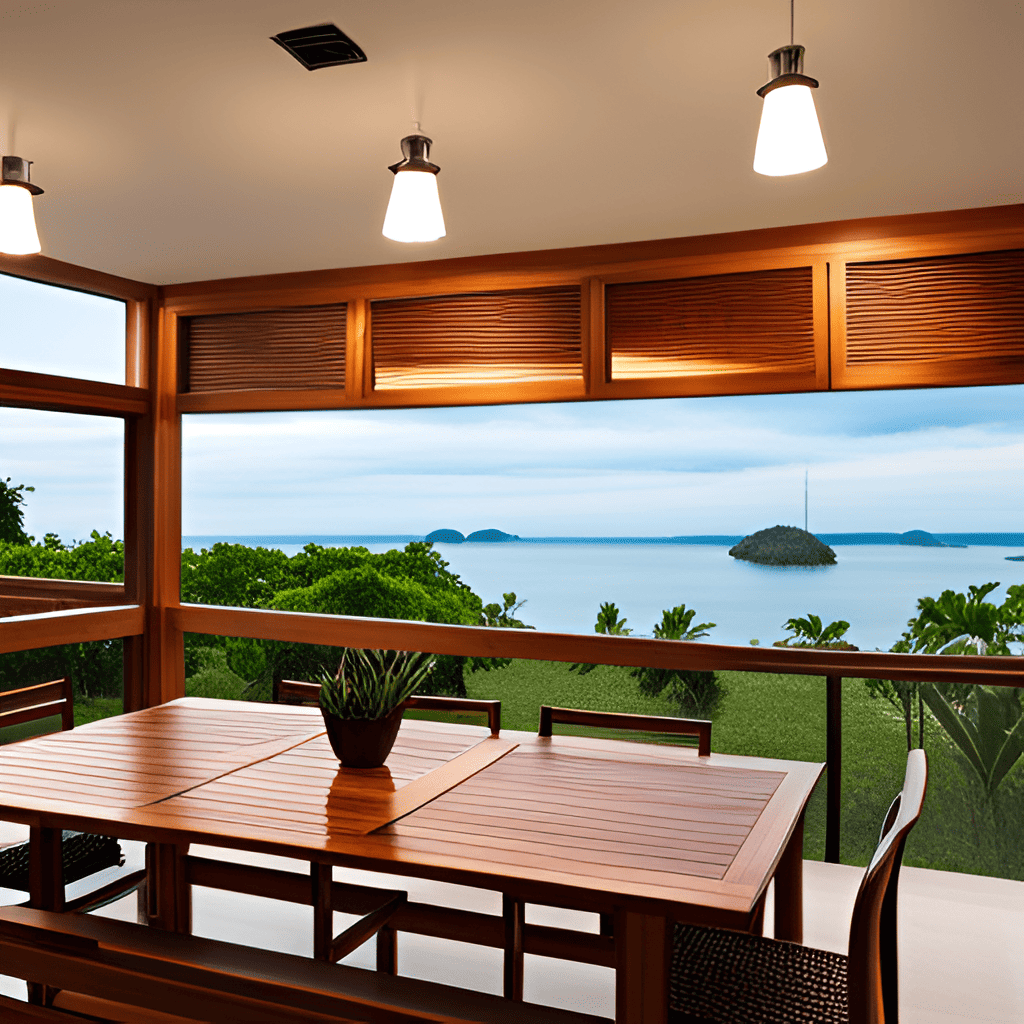Bangkirai wood, also known as Yellow Balau, is a versatile and durable tropical hardwood that finds a wide range of applications due to its excellent properties. It is commonly used for various outdoor and heavy-duty projects.
Bangkirai Wood Has Numerous Outdoor Uses
Bangkirai wood is known for being very durable and is thus often used for outdoor usage due to its ability to stand up to the elements.
Here are some common uses for Bangkirai wood:
- Outdoor Decking: Bangkirai wood is a popular choice for decking due to its natural resistance to weathering, moisture, and insects. It can withstand outdoor conditions and heavy foot traffic.
- Cladding and Siding: The wood’s durability and attractive appearance make it suitable for exterior cladding and siding applications, adding a rustic and elegant look to buildings.
- Structural Beams and Posts: Bangkirai wood’s strength and load-bearing capacity make it suitable for constructing structural beams, columns, and posts in buildings, bridges, and other structures.
- Fencing and Privacy Screens: Its resistance to decay and insects makes Bangkirai wood a suitable material for fencing and privacy screens in outdoor spaces.
- Pergolas and Gazebos: Bangkirai wood is often used to construct pergolas, gazebos, and other outdoor structures that provide shade and enhance outdoor living areas.
- Bridges and Boardwalks: Due to its strength and resistance to environmental conditions, Bangkirai wood is used in the construction of pedestrian bridges, boardwalks, and pathways.
- Marine Applications: Its natural resistance to moisture and marine borers makes Bangkirai wood suitable for marine applications such as boat docks, piers, and other waterfront structures.
- Poles and Utility Posts: Bangkirai wood’s strength and durability make it a reliable choice for utility poles, fence posts, and similar applications.
- Heavy-Duty Construction: It is used in heavy-duty construction projects that require strong and durable materials, such as railway sleepers and industrial structures.
- Outdoor Furniture: Bangkirai wood is utilized in crafting outdoor furniture, including benches, tables, and chairs, due to its weather resistance and longevity.
- Landscaping Features: It is employed in creating landscaping features such as garden pathways, retaining walls, and raised flower beds.
- Architectural Elements: Bangkirai wood is used to create architectural elements like beams, brackets, and decorative trims in both residential and commercial settings.
Bangkirai Trees Have Many Unique Characteristics
Here is a table summarizing 15 interesting and important characteristics of Bangkirai trees and wood:
| Characteristic | Description |
|---|---|
| Scientific Name | Shorea spp. (various species, including Shorea laevis) |
| Common Names | Bangkirai, Yellow Balau |
| Native Range | Southeast Asia, including Indonesia and Malaysia |
| Tree Height | 50 to 60 meters (164 to 197 feet) |
| Tree Diameter | 80 to 100 centimeters (31 to 39 inches) |
| Growth Habit | Tall, straight-trunked tree with dense foliage |
| Wood Color | Warm golden-brown to light yellow |
| Wood Grain | Straight to interlocked grain pattern |
| Texture | Coarse texture with resin canals |
| Durability | Highly durable, resistant to decay, termites, and fungi |
| Strength | High strength properties, capable of withstanding heavy loads |
| Weather Resistance | Resistant to weathering, moisture, and UV rays |
| Workability | Moderately challenging to work due to density and hardness |
| Applications | Outdoor decking, cladding, structural beams, fencing, furniture |
| Sustainability | Certification from sustainable sources supports responsible use |
| Other Names | Yellow Balau, Bangkirai, Selangan Batu (local name) |

Bangkirai Wood Substitutes If Required
If Bangkirai wood is not readily available or if you’re looking for alternatives, there are several other types of wood that offer similar properties and characteristics suitable for outdoor and heavy-duty applications. Here are some substitutes for Bangkirai wood:
- Ipe (Brazilian Walnut): Known for its exceptional durability and resistance to decay, Ipe is a popular choice for outdoor decking, siding, and structural applications. It shares Bangkirai’s strength and longevity.
- Cumaru (Brazilian Teak): Similar to Ipe, Cumaru is a dense and durable tropical hardwood that is commonly used for decking, flooring, and outdoor structures. It features a rich reddish-brown color.
- Garapa: Garapa wood is prized for its natural beauty, strength, and resistance to decay. It is often used for decking, cladding, and outdoor furniture, providing a warm and attractive appearance.
- Merbau: Also known as Kwila, Merbau is a versatile hardwood that offers durability and weather resistance. It’s commonly used in decking, flooring, and outdoor applications.
- Teak: Teak wood is renowned for its natural oils that make it highly resistant to moisture and insects. It’s a classic choice for outdoor furniture, boat decking, and other marine applications.
- Red Balau: Similar to Bangkirai, Red Balau (Shorea spp.) is used for decking, siding, and heavy-duty applications. It shares similar durability and strength properties.
- Cedar: Western Red Cedar and other cedar species are known for their natural resistance to decay and insects. They are often used for outdoor furniture, fencing, and siding.
- Pressure-Treated Pine: Treated pine offers enhanced durability and resistance to decay, making it suitable for outdoor structures like decks, pergolas, and posts.
- Cypress: Cypress wood is rot-resistant and often used in outdoor applications such as decking, siding, and outdoor furniture.
- Black Locust: Known for its natural durability, black locust is used for various outdoor projects, including decking, posts, and landscaping features.
When considering substitutes for Bangkirai wood, it’s important to evaluate the specific requirements of your project, the wood’s availability in your region, and its sustainability credentials. Choose a wood that aligns with your desired aesthetics, performance, and environmental considerations.
Final Thoughts
Bangkirai wood’s durability, strength, and resistance to weather and pests make it a popular choice for outdoor applications, heavy-duty construction, and various architectural projects. Its distinctive appearance and sustainable sourcing options contribute to its widespread use in the building and woodworking industries.
However, it’s important to ensure that Bangkirai wood is sourced sustainably and ethically to support responsible forestry practices and environmental conservation.

